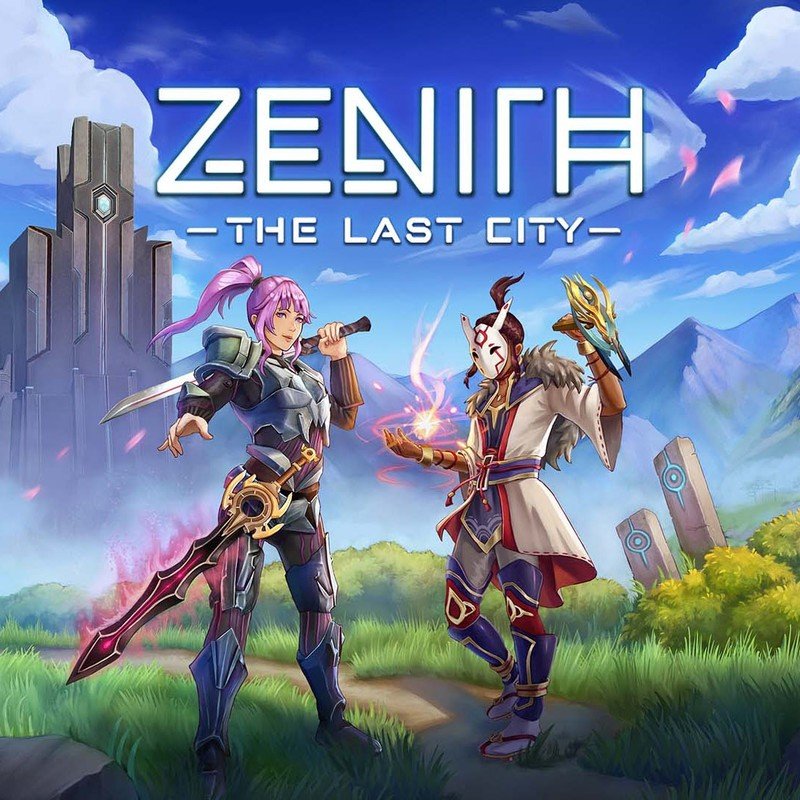Zenith VR impressions: The VR MMO you've been waiting for
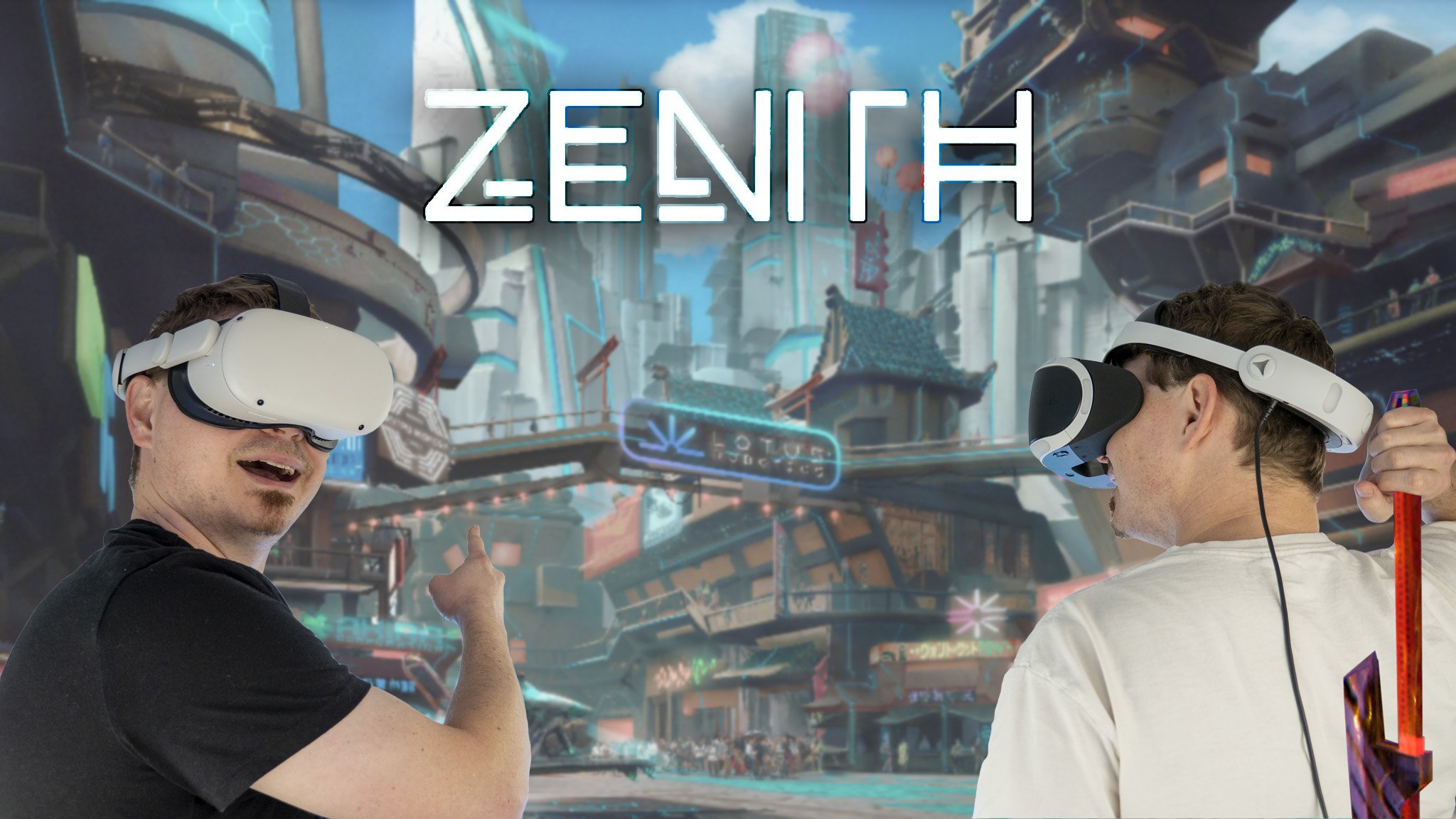
For one reason or another, massive multiplayer and VR haven't gone hand-in-hand very well. For all the promises of the metaverse being the new way to socialize without having to leave the comfort of your home, most VR games that try to fit many players end up like A Township Tale — that is, while the mechanics are solid and unique to VR, the world feels devoid of life and a bit bland.
As such, I had zero expectations going into Zenith: The Last City. Zenith's developer, RamenVR, promises the game will deliver over 100 hours of content at launch, with plenty of updates and new content to come. RamenVR has also built the game from the ground up for VR, creating unique locomotion, crafting, cooking, and combat mechanics that fit the platform better than an existing MMORPG played on flat screens might.
The game promises a way for players to scratch that MMO itch in a way that hasn't been done effectively before and, for the most part, it seems to nail most of the basics. I've been playing Zenith: The Last City for a few days now and have been able to try it out on the Quest 2 natively, the SteamVR version via Virtual Desktop, and the PlayStation VR version on a PS5.
Since this is an MMORPG, I'm starting with giving you my first impressions on the game, how the mechanics work, how the social aspects work, and what the differences are between all three platforms.
Disclaimer: This preview was made possible by a review code provided by RamenVR. The company did not see the contents of the review before publishing.
Zenith: The Last City: Availability
The game becomes officially available on the Oculus Quest 2, PlayStation VR (via PS4 or PS5), and SteamVR platforms on January 27, 2022. This is technically the early access version, which means the game is still heavily under development.
Zenith supports cross-buy on the Oculus platform — so you get the Oculus Rift copy if you purchase the game on Quest, or vice versa.
Be an expert in 5 minutes
Get the latest news from Android Central, your trusted companion in the world of Android
Additionally, players can play alongside any other player — regardless of the platform they chose to play on — and characters can be used on any platform you might own the game on. If you were to make a character on the Quest and then later decide to play the PlayStation VR version of the game, your character would carry over thanks to Zenith's own account system.
Zenith is a one-time purchase game and does not require a monthly fee, counter to most MMOs.
Zenith: The Last City: The world
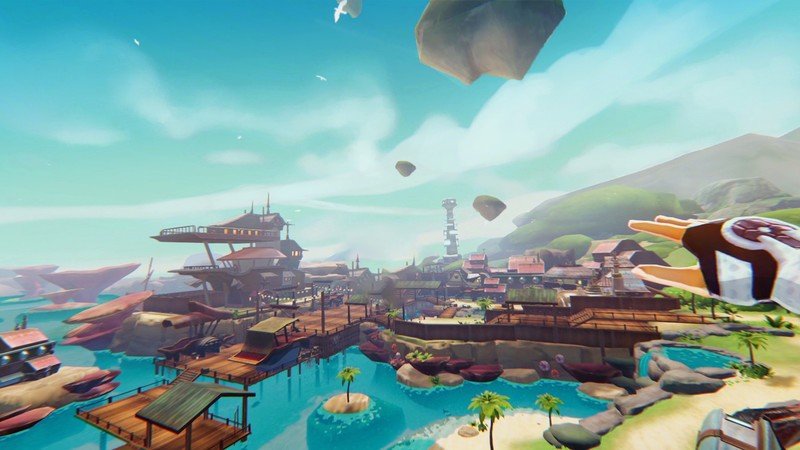
Veterans of Phantasy Star Online will immediately feel at home the moment they boot up Zenith: The Last City. From the music to the visuals, it's hard to feel like the game wasn't inspired by folks who grew up playing PSO on the Dreamcast. Even the floating bits of your armor in the game at least have a passing resemblance to the MAGS from PSO — something that made me smile more than once.
Zenith's visual style is very much a fascinating mix of sci-fi and fantasy worlds, pitting minotaur-like enemies against laser blasters, floating islands, and plenty of arcane magic to cast. At launch, the game is made up of five main areas that players can progress through. RamenVR says an estimated 100 hours or so of gameplay can be experienced with the launch content.
Zenith's visual style is very much a fascinating mix of sci-fi and fantasy worlds, pitting minotaur-like enemies against laser blasters, floating islands, and plenty of arcane magic to cast.
As the name implies, the large cityscape is the main hub of Zenith's world. Players will begin their journey on the streets of the undercity, quickly moving up and out of the confines of the concrete jungle and into a more lush overworld.
Quests, so far in my experience, are the usual MMO fare. NPCs will task you with quests to kill a certain number of enemies — usually strung together by a small tidbit of story about crops being ravaged or peaceful areas being overtaken — while other quests might focus on fetching ingredients in order to craft new items.
RamenVR says the game features several different calibers of quests, including story-driven quests, procedurally-generated areas that provide unique loot and adventures each time you complete them, and world events that often include fighting waves of enemies.
In the few days I had with the game, I tried out all six classes on offer to get a taste of what to expect from each. Players choose from two main combat class types from the start. Choose a Blademaster for primarily melee-based combat, or an Essence Mage to keep things at a distance with ranged weapons and spells. Choose wisely, because this class type cannot be changed once you've selected it.
A third mystery class is currently under development.
Players can switch between specialties once every 60 seconds, meaning you can fully specialize your role for each and every battle you come across.
Once you've chosen your main class, you can choose a specialty to focus on. Choose DPS to deal tons of damage, Tank to take all the damage for your team, or Support to keep everyone going for the long haul. Each area of specialty utilizes different spells and weapons and has its own leveling structure.
But RamenVR doesn't want players just picking one specialty and sticking with it for the entirety of their playtime in Zenith. Instead, players can switch between specialties once every 60 seconds, meaning you can fully specialize your role for each and every battle you come across.
Playing on your own? It probably makes more sense to switch to the Tank or DPS roles to dispatch enemies as quickly as possible, while the Support role will primarily be focused on helping your party as a whole. This mechanic is unique to Zenith, as far as I'm aware, and was one that I thoroughly enjoyed trying out during my time with the game.
The character builder is fairly robust, offering lots of different ways to customize your character before entering the world, including skin tones, eye colors, hairstyles, and more.
Players can also choose to outfit themselves with an aesthetic armor set throughout their adventures, so your look isn't bound to that ugly-but-powerful piece of armor you might have earned from completing a dungeon.
Some other mechanics aren't nearly as polished as I'd like, but I fully expect these to get ironed out as development progresses.
Players can also choose to outfit themselves with an aesthetic armor set throughout their adventures, so your look isn't bound to that ugly-but-powerful piece of armor you might have earned from completing a dungeon.
Pairing up with friends was a bit confusing initially, as you have to hold the grip button and point to another player to pull up a contextual menu in order to add them as a friend. From here, you can also block and report players who might be disruptive or overly rude, as well.
While there's no personal space bubble options just yet, it was great to see a primarily social game ensuring that blocking and reporting bad players was a simple enough process.
Players can chat with one another in their party, guild, or even in public spaces if they so choose. By default, voice chat was set to global, which means you can communicate with any person in your immediate vicinity so long as they also have global chat enabled. This is done on a proximity basis, though, so you can't go too far away from each other if you want to chat.
Party and guild chats don't follow the proximity rule, which is much better for when you're actually trying to go on a quest. Audio was a little finicky in my playtime and I had to restart the game on more than one occasion to get audio working properly but, this too, is likely something that'll get ironed out over time.
Grouping up and finding your teammates could use a little bit of work, in my experience, as it wasn't always easy to figure out where your teammates might have run off to (or where to meet them initially). Player locations are presented on the map, but I found that this got bugged from time to time.
Fast travel is, thankfully, an option once you've reached predetermined travel stations and can be accessed quickly via the map.
So far, my biggest issue with the game is the lack of a robust onboarding and tutorial system.
So far, my biggest issue with the game is the lack of a robust onboarding and tutorial system. The initial tutorial does a great job of explaining movement, combat, and the most basic ways to get around the world. Beyond that, however, instruction is extremely minimal and often resulted in me getting lost or confused.
Take cooking, for example. Cooking is the only non-combat profession in the game but isn't explained very much at all. You'll get your first cooking "quest" to make an orange smoothie at level 6 from the chef in the city. The initial portion of the quest is simple enough: go outside and gather oranges, then buy some milk from the store when you get back.
After that, I had no idea where to actually prepare and cook the food I'd brought back. It's possible I missed the instruction somewhere along the lines, but I'd run into this before with other quests. The NPCs give great descriptions of certain parts of quests but sometimes leave off important details that help the player understand exactly what they're supposed to be doing.
I still haven't quite figured out how to properly cook, although it looks like it could be a blast.
As it stands, I still haven't quite figured out how to properly cook, although it looks like it could be a blast. I did stumble upon the cooking station eventually — it's found in your cooking sub-menu by clicking a button to summon the food station. The bright side with this design is that you can literally cook anywhere, but I'm still not entirely sure how each area of the cooking station works because of the lack of instruction.
Zenith: The Last City: Locomotion, combat, and accessibility
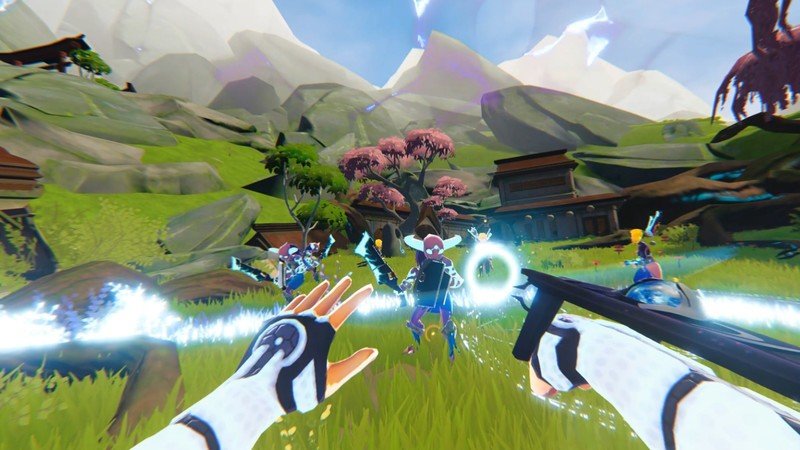
As an MMO purpose-built for VR, Zenith's locomotion and combat are wholly unique when compared to any other MMO on the market. Players will find themselves actually slashing their swords and casting spells — not just pressing a row of numbers on a keyboard or watching their characters automatically attack — not to mention aiming your gauntlet at a mage and firing spells at enemies.
Swords and other melee weapons handle differently depending on their length, weight, and other factors. As we've seen in games like The Walking Dead: Saints & Sinners or Until You Fall, weapons feel heavy and can't be swung like weightless noodles during combat.
Swords and other melee weapons handle differently depending on their length, weight, and other factors.
Blocking with your blades feels visceral, and I generally enjoyed melee combat quite a bit. Shooting with your gauntlets as an Essence Mage will feel different depending on your specialty, as the Support specialty shoots energy bullets while the Tank specialty fires out a constant burning laser.
Every class is able to cast spells — not just the Essence Mage — which is done via a series of gestures. At any time, players can hold the grip button and move their arm in a direction — that's up, down, left, and right, depending on the class — or simply pull the trigger to summon a spell. Spells are unlocked and upgraded through combat and exploration, and players can swap between spells at will.
Every so often, while climbing, I'd find myself accidentally casting a spell. I'm not entirely sure how this could be prevented but I found it at least a tiny bit annoying when it happened.
Zenith takes locomotion cues from other VR games like Population: One in the best way. Players can climb basically any object or structure in the game then glide off by holding their arms out like wings. Additionally, there's actually a jump button that can be useful when getting stuck on objects.
The feeling of freedom that's granted a player by simply letting them climb up and glide off anything cannot be understated.
Unlike Population: One, actions in Zenith require stamina to perform. Climbing, as it would make sense in real life, can tick down the stamina gauge pretty quickly. Gliding doesn't require as much stamina but can become harrowing if you're not paying attention while soaring to ominous heights.
The feeling of freedom that's granted a player by simply letting them climb up and glide off anything cannot be understated. This is a killer feature for an MMO, and it opens up the world in a way that even games like World of Warcraft could only hope for.
Sure, you can fly a mount in WoW and get a literal birds-eye view, but can you climb to the top of a cliff and enter a dungeon from a natural opening in the rock? Certainly not, and that's just part of what makes Zenith feel so uniquely open.
Zenith's developers, RamenVR, also seem to have thought of nearly every possible accessibility option for their first big game. Players can choose from the usual smooth locomotion or teleportation options but also have the ability to swap to third-person movement if they're having a hard time with queasiness.
Think of how old-school Resident Evil games portrayed the character moving throughout the environment while the camera stays pinned to a spot and you'll get the idea. This could be a massive boon to players who usually have a hard time with virtual movement and really should be applauded.
Likewise, it's just as easy to play the game seated as it is to play it standing. You might occasionally whack your knees if you're playing as a Blademaster while sitting, but you'll likely naturally adapt your movements to avoid this if it happens, anyway.
RamenVR seems to have thought of nearly every possible accessibility option.
The game also features an auto height adjustment that can be easily recalculated in the menu; a particularly important accessibility option that is, thankfully, becoming more common in modern VR games.
Zenith: The Last City: Quest vs PSVR vs PC
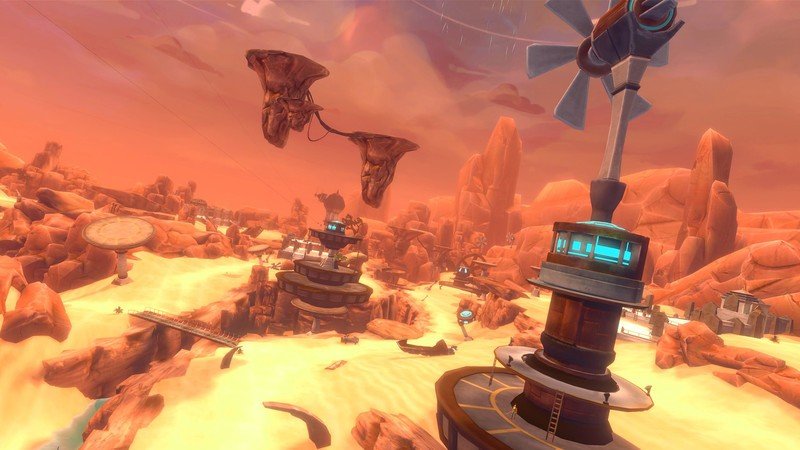
As Zenith is the same game with an identical feature set across all platforms, you might be wondering which provides the best experience. After having played all three major platforms — that's Oculus Quest 2, Playstation VR on a PS5, and Windows PC — the obvious answer is that PC is best if you're most concerned about graphics.
Visually, the PC version is the fullest experience, providing real-time shadows, significantly higher volumes of grass and other aesthetic touches, and better spell and particle effects. You'll also see a slight boost in geometry and texture quality, but those particular settings aren't nearly as noticeable as some other visual effects.
Visually, the PC version is the fullest experience, providing real-time shadows, significantly higher volumes of grass and other aesthetic touches, and better spell and particle effects.
Visually, the biggest difference between the PC and Quest versions of the game is, largely, in how much object pop-in occurs in areas. On the Quest 2, you'll regularly see mountains popping up in the distance and, from the time time, might even have a building appear out of nowhere while traversing through the city.
Getting a game this large and relatively seamless is a miracle in and of itself on Quest, so this isn't a complaint; simply an explanation of the differences.
The PlayStation VR version — at least played on my PlayStation 5 — sits somewhere between the two versions, as would be expected. There's a lot more grass in the PSVR version but not quite as much as the PC version at max settings. It's a tiny bit clearer than the Quest version which, I surmise, is running at slightly lower than native resolution on Meta's headset.
All three versions performed admirably, with the Quest version occasionally hiccuping to load objects. I never experienced any performance-related issues that might be game-breaking or jarring, as these minor hiccups normally occurred when moving between areas.
Unless you're fast traveling or hopping through a portal, the world is one large, seamless area that you can move between. Loading times were quick for all three platforms and I never had to wait for more than a few seconds for the game to load, even when warping between the city and somewhere in the overworld.
As impressive as getting this game to work on the Quest 2's hardware might be, I was more impressed by the fact that the PlayStation Move controllers actually worked very well. Despite not having a joystick or any real means of virtual movement, RamenVR figured out a way to turn the overly simple-yet-somehow-convoluted Move controllers into something actually useful for an open world MMORPG.
Just as in games like Alvo, players can move forward or backward by pressing the large Move button in the middle of the controller. The left controller moves forward, while the right controller moves backward. You can choose to steer with your head or by tilting the controller, which should please most players.
As impressive as getting this game to work on the Quest 2's hardware might be, I was more impressed by the fact that the PlayStation Move controllers actually worked very well.
Managing inventory was a little more difficult since the start button is in an awkward place on the controller but, thankfully, this isn't a screen you'll be accessing every minute of gameplay. The most awkward thing, for me, was tapping the triangle button to put my swords or gauntlets back in their sheaths, whereas the Quest and PC versions automatically re-sheaths your weapons when you let go of the grip button.
Zenith: The Last City: What's to come
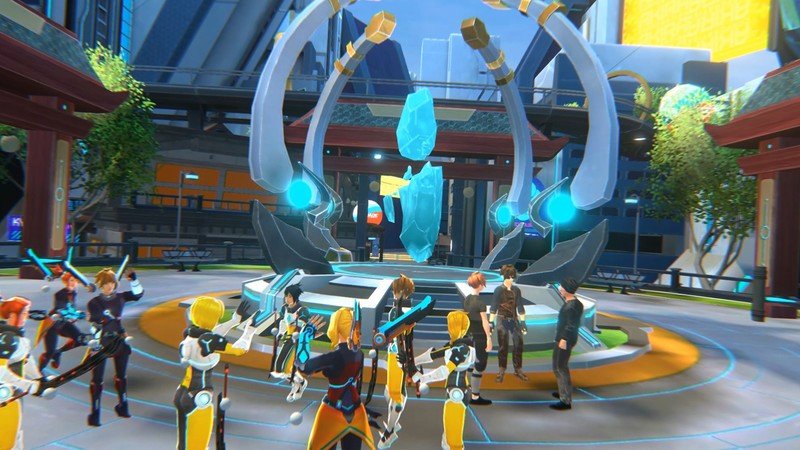
Zenith blew me away in almost every respect, from the visuals to the music, the combat and exploration, and everything in-between. There are a fair number of bugs but none of them was game-stopping. Really more of an annoyance, if anything.
I'm hoping that, given the assumed influx of players over the next few weeks, RamenVR can work on additional tutorials and better onboarding for some of the more advanced mechanics like cooking. The in-game guide is fine, but it's easier to see a visual of what to do at a cooking station than to read about it.
There's currently no hard limit to the number of players that can be in any given area but there are clientside optimizations that'll cull models in order to keep performance acceptable.
The biggest question, at least right now, is how well the servers will handle the player count. From what we can tell, pre-orders for the game have been doing very well and show that there's a big interest in a VR MMO. During my playtime, there were never more than a handful of players online at any given point in time, and all the partying up I did was with other video game journalists.
RamenVR tells me that player count will likely fluctuate as the company works to balance and improve server architecture, but the hope is that hundreds of players can join in on a server at any point in time. There's currently no hard limit to the number of players that can be in any given area but there are clientside optimizations that'll cull models in order to keep performance acceptable.
There's no current way for guild members to find each other in a game but the team tells me they are working on new mechanics to make that a reality. Right now, at least if you're using a Quest, you can create an Oculus party and join up from there, including fast warping to the same location via the built-in party features on Meta's platform.
The world feels ready to overflow with players and, given the social aspect of the game, will likely shine even brighter with a ton of players at the helm.
Personally, I just can't wait to experience the game with a high player count. The world feels ready to overflow with players and, given the social aspect of the game, will likely shine even brighter with a ton of players at the helm. Regular content updates are also expected and, from what I can tell, Zenith: The Last City is very much the VR MMO we've been waiting for.

